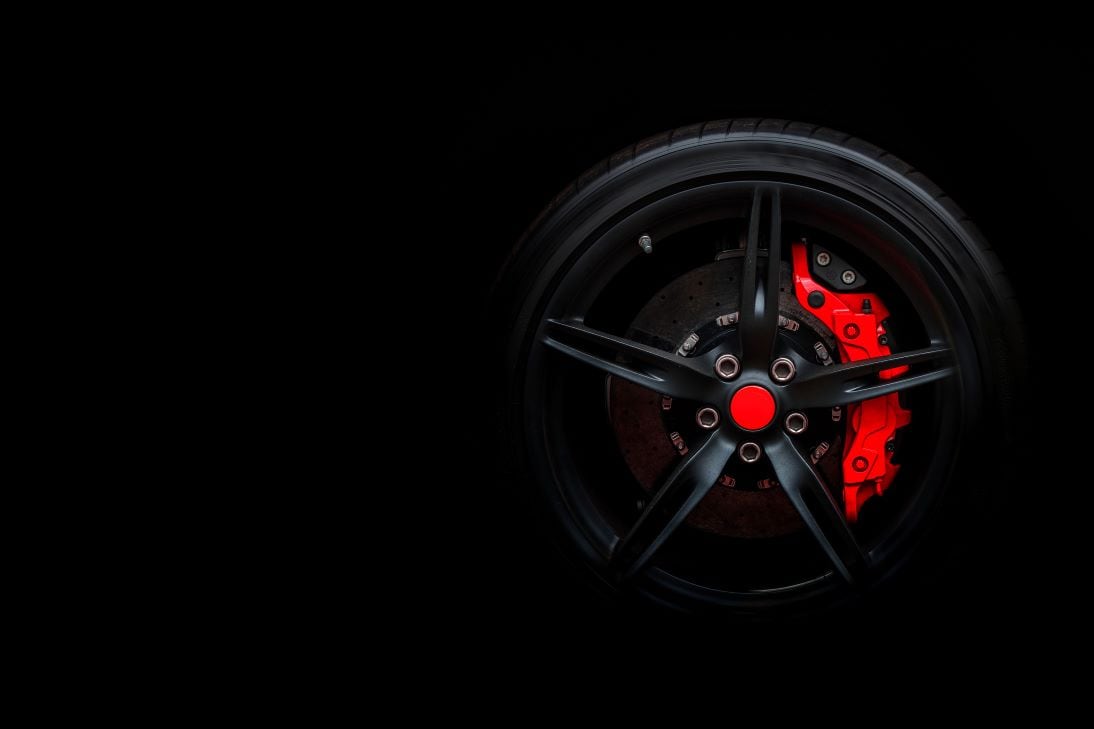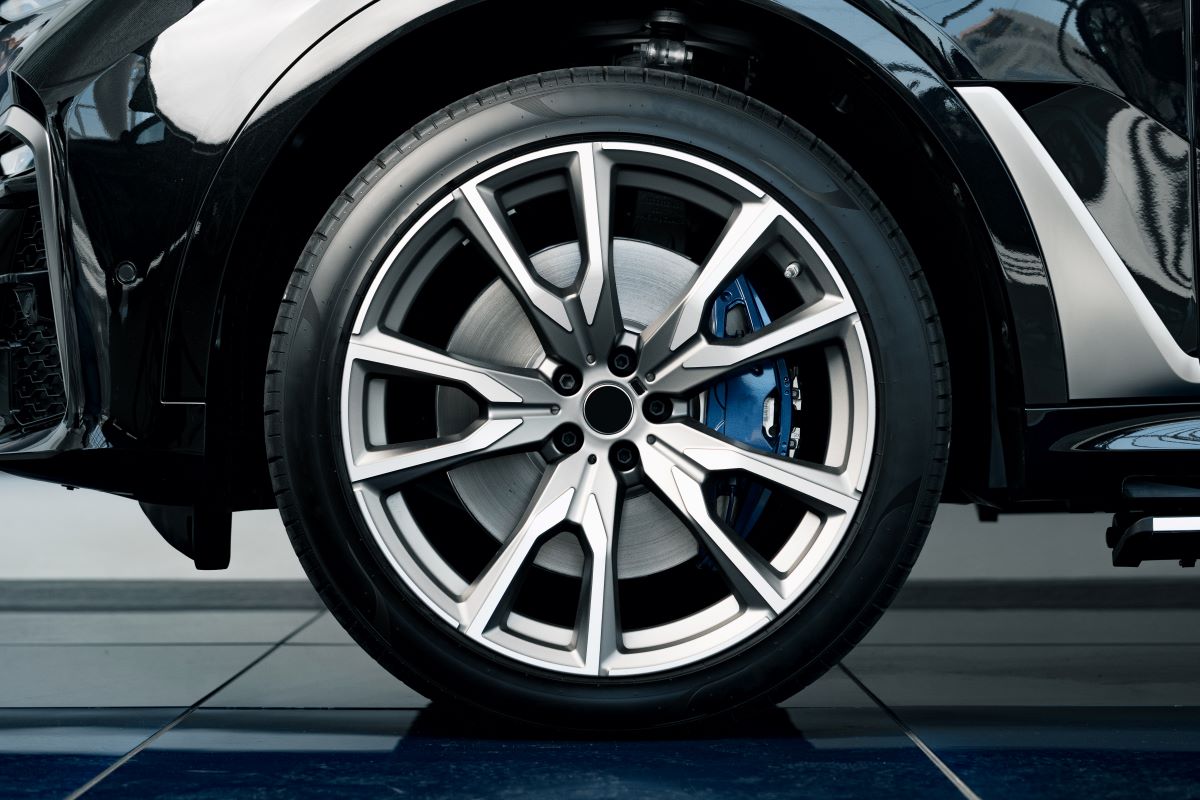
[ad_1]

If we were to ask ten different people, “What’s the most important part of your car?” we’d probably get ten different answers. Engine? Sure. Drivetrain? Definitely. Bespoke tailor-made umbrella compartment? Well, why not?
Really, it’s a trick question. Especially in custom luxury vehicles, every element of design and engineering works together in conjunction to become more than the sum of their parts. Still, some parts are a little more important.
Tires, for instance. As the main points of contact with the road, nobody could argue that they aren’t all-important. Not all luxury tires are created equal, though. So, let’s take a quick run-through of different types of tires, where they excel, and where they can potentially fall flat.
All-Season Tires
Of all the kinds of tires, these are generally regarded as the most versatile, hence the name. Because of their versatility, they’re the most popular type, and most non-performance passenger models will come with them as standard. The tread tends to be mostly symmetrical, and the prominent surface grooves are usually circumferential, which means they run parallel to the tread—this allows liquids to pass through without messing with traction, which grants these tires decent performance in wet conditions.
Being the “jack-of-all-trade” tires, they have an overall solid road manner, but they don’t particularly excel at any one thing. They may not last quite as long if regularly driven at highway speeds, and they aren’t especially stable in snowy or muddy conditions. Because of this, drivers who commute long distances, and drivers who live in places that experience high snowfall will likely want to consider a different type.
All-Weather Tires
This category is sometimes erroneously seen as the same thing as all-season. While they do have quite a bit of overlap, there are some key differences in all-weather vs. all-season tires.
All-weather can be seen as a moderately burlier counterpart of all-season. They may have marginally more pronounced tread patterns, and they may also be made of slightly more rugged material. This grants them more stability in moderate snowfall and heavy rain compared to all-season tires, but the potential downside is a slight increase in road noise.
All-weather tires can be a great option for someone who lives in an area that sees more extreme snowfall but doesn’t want to deal with switching to dedicated snow tires for the winter months.
Touring Tires

Luxury touring tires are the long-haul champions of the tire world. They differ from all-season tires in that they’re made of sturdier stuff, and the tread pattern is a bit more aerodynamic. This tends to give them a smoother ride at interstate speeds and generally allows them to last longer than other tire types.
Better comfort and performance at high speeds is the name of the game here. However, much like all-season, they aren’t designed to tackle extreme road and weather conditions.
Grand Touring Tires
Here we have another category that’s often used interchangeably. Many folks don’t recognize the difference between these and regular touring tires. So, is there a difference in touring vs. grand touring tires?
Much like all-weather and all-season, the two touring categories have a lot of overlap. Luxury grand touring tires have about the same capability in harsh weather, but grand touring tires offer better performance at high speeds. Basically, you could consider GTs to be a blend of regular touring tires and performance tires.
Performance Tires
Sometimes called “high-performance tires,” these are meant to prioritize the best handling and highest top speed rating compared to other luxury brands. Vehicles with larger engines and higher horsepower will often have performance tires.
Performance tires often have a more lateral tread pattern, meaning the treads run perpendicular instead of parallel. They often make use of “sipes” as well, which are tiny grooves cut into the rubber to enhance traction on wet surfaces. They’re also often made of stronger stuff than all-season tires. Because of their construction, performance tires are perfect for luxury sports cars in wet locales like Southern Florida.
Performance tires sometimes have a slightly rougher ride, because they’re designed to allow the driver to feel the road better. You’ll likely feel potholes and uneven pavement more than if you had a tire with more shock absorbance. Still, on well-paved roads, they’re hard to beat.
There are a few subcategories, too. All-season performance tires will behave better in the snow than summer performance tires. If you have a luxury car like a Rolls-Royce Phantom, which puts out over 560 horsepower, you may want to consider upgrading to an ultra-high-performance tire.
Competition Tires
Also known as “track tires,” you can think of these as beefed-up performance tires. Grooves and tread voids are largely forgone in favor of solid rubber-on-street contact, which gives them the best traction and performance in dry conditions. They’re also often reinforced by more durable materials. These tires aren’t much good in wet or uneven conditions, though, so they’re usually reserved specifically for track days, and rarely used as daily drivers.
Low-Profile Tires
Low-pros are a subset of performance or track tires, and they can be quickly recognized by an extremely small sidewall height, or “aspect ratio.” Because of their decreased height, they’re usually paired with larger rims.
Low-pros have more contact with the road than most other types. The smaller sidewalls allow less flex at high speeds and more responsive steering. All of this translates to greatly increased performance, more responsive braking, and improved ability to feel the road.
The drawback is that these tires don’t fare well on even slightly rough roads, and they can make for a bumpy ride on a daily driver. They’re also much more susceptible to damage from speed bumps and potholes, therefore they’re usually best suited to a race or performance setting.
Summer Tires
As the name suggests, these tires are meant to be used in warm conditions. They are notable for their lack of siping and pronounced circumferential grooves for hydroplane resistance. Because of this, they’re a good performance option in both wet and dry conditions, as long as it doesn’t dip below a certain temperature. They are typically not rated for temps below 40 degrees Fahrenheit, so they’re ill-suited to climates with even mild snowfall.
Winter Tires
On the other side of the coin, we have winter tires, which are—you guessed it—tailored to colder, snowier weather. These tires are typically reserved for people who live in far northern or southern latitudes, or mountainous areas with high elevation. If you’ve ever rented a car on a ski trip, there’s a decent chance it’ll be fitted with some variety of snow tires.
Most winter tires rely on a unique tread pattern and heavy siping to get the job done, but there are also studded winter tires, which feature small metal prongs running along the tread for the absolute maximum grip in snow and ice.
All-Terrain Tires
You may also hear these referred to as “off-road tires.” Some people balk at the idea of putting an all-terrain tire on a luxury vehicle, but we say, what’s the point of having all that power if you don’t have some fun with it every once in a while?
These tires are meant to complement 4WD or AWD vehicles in uneven conditions with a lot of rock, sand, or mud. Their appearance is marked by a very aggressive tread pattern, with large, deep voids for the best traction. Despite this, they can still provide decent comfort on the tarmac, even at highway speeds, although they do tend to be louder than street-oriented tires. Because of this, luxury car owners who enjoy off-roading and overlanding often keep a spare set of AT tires for excursions and swap them out for something more pavement-friendly in day-to-day life.
Run-Flat Tires
One of the newer subsets of tire, run-flats are designed with either a rigid inner support ring or reinforced sidewalls, which will keep the tire useable for a period of time after a major puncture.
This type of tire technology is becoming more and more popular in newer models because it nearly eliminates the need to carry a spare and jack stand, or worry about changing a flat on the side of the road. Run-flat owners should be cautious, though—they’re not meant to be driven without air indefinitely. After the tire is perforated, you’ll still need to get it to a tire shop near you to have the problem fixed as soon as possible. Think of it as a donut that you don’t have to change yourself.
What Kind of Tires Are You Using on Your Rolls-Royce?
 ?
?
We have to admit, we tend to enjoy the bespoke custom tires that every Rolls-Royce comes with right out of the factory—but, hey, maybe we’re a little biased.
Are you looking to upgrade for your next ski trip or camping adventure? Our parts center has luxury Rolls Royce tires in Miami for any occasion—simply give us a call at (786) 577-5217 to learn more, and be sure to ask the tire department about our one-of-a-kind Rolls-Royce service.
[ad_2]